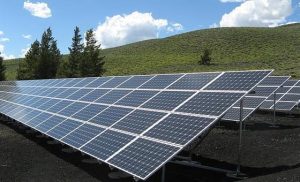How Efficient Are Normal Commercial Solar Cells?
In the rapidly evolving world of renewable energy, solar power takes center stage, offering a clean, sustainable source of electricity. At the heart of this solar revolution are commercial solar cells, whose efficiency rates have become a hot topic for investors, environmentalists, and consumers alike. Let’s dive deep into the nuts and bolts of commercial solar cell efficiency and understand what sets the stage for the future of solar energy.

Understanding Solar Cell Efficiency
Solar cell efficiency refers to the proportion of sunlight energy that a solar cell can convert into usable electricity. It’s the yardstick that measures how well a solar panel performs under ideal conditions. Typically, this efficiency is influenced by the materials used, the structure of the cells, and the technology behind them.
Current Efficiency Rates
As of the latest advancements, commercial solar panels generally boast efficiency rates ranging from 15% to 22%. This range represents the bulk of products available to consumers and businesses. The highest efficiencies are often found in monocrystalline silicon solar cells, a preferred choice for high-performance applications due to their superior light absorption capabilities.
Factors Influencing Efficiency
Several factors play pivotal roles in determining the efficiency of solar cells. First, the quality of the silicon used is paramount. Higher-grade silicon means fewer impurities, leading to better performance. Additionally, the design of the solar cell, including how electrons are collected and transported, significantly impacts efficiency.
Technological innovations also play a crucial role. For instance, PERC (Passivated Emitter and Rear Cell) technology enhances performance by allowing cells to capture more sunlight. Similarly, bifacial solar panels, which collect sunlight from both their front and back sides, offer a promising increase in efficiency.
Challenges and Opportunities
Despite the strides made in solar cell efficiency, challenges remain. The cost of high-efficiency solar panels can be prohibitive for some, though prices have been steadily decreasing. Furthermore, solar cells typically perform best under ideal conditions, and their efficiency can drop in less-than-optimal environments, such as on cloudy days or in areas with high pollution levels.
However, the industry is ripe with opportunities for innovation. Researchers are continually exploring new materials and technologies, such as perovskite solar cells, which may offer higher efficiencies at lower costs. These advancements could make solar power more accessible and affordable, paving the way for wider adoption.
For those eager to learn more about how efficient are the normal commercial solar cells? further information can be found here.
Looking Ahead
The journey towards more efficient solar cells is ongoing, with research and development pushing the boundaries of what’s possible. As efficiency rates climb, the potential for solar power to become a dominant force in global energy markets grows. With continued innovation, the day when solar energy powers a significant portion of our world is not just a possibility but an inevitability.
The Bottom Line
The efficiency of commercial solar cells has made significant strides, offering a beacon of hope for a sustainable energy future. While challenges remain, the relentless pursuit of innovation and improvement in solar technology spells a bright future for solar energy. As consumers, understanding the efficiency of these solar cells helps us make informed decisions about our energy use, contributing to a greener planet for generations to come.
